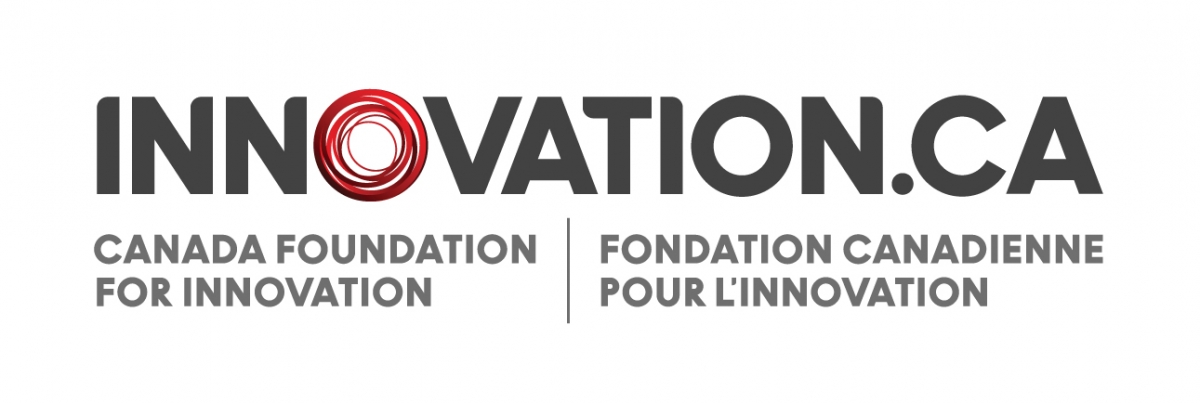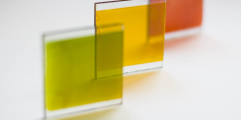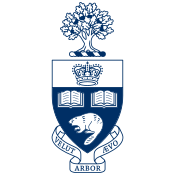

Figure 1 Figure 2
http://www.asylumresearch.com
……….While the first commercial AFMs were produced in the late 1980s, the origins of optical microscopy are much less clear, but are thought to lay with simple magnifying glasses in the mid-9th century with further developments in the 16th century. However, it wasn’t until the 17th century that history records scientific observations made with simple and compound microscopes, most notably in the field of biology by Hooke and van Leeuwenhoek (Figure 1). Despite this long history, the most exciting time in optical microscopy has arguably been the past 100 years or so, as diffraction-limited optics, chemically-specific stains, and fluorescent markers and indicators have become widely available. In most modern applications, optical microscopy resolution is on the order of 200-300nm in X and Y, and 500nm in Z.
The AFM (Figure 1above left) uses a microfabricated cantilever made of silicon or silicon nitride with a sharp tip that physically touches the surface of interest. The cantilever raster-scans the sample while its deflection or oscillation amplitude is measured. These measurements are performed with an optical tracking system that uses a segmented photodetector to track the reflection of a laser or superluminescent diode (SLD) off the back of the cantilever (Figure 2, above right ).
Detected changes in cantilever deflection or oscillation are corrected to a setpoint value by actuating the cantilever in Z via a feedback-controlled piezo. These correction voltages sent to the Z piezo are recorded and correlated to a voltage-distance calibration factor in order to determine the height at a given XY coordinate. Because piezos suffer from nonlinearities due to hysteresis, creep, drift, and aging effects, most modern AFMs incorporate sensors that can linearize and correctly measure actual piezo actuation in XYZ. While a variety of sensors are available, the highest performance typically comes from linear variable differential transformers (LVDTs) because of their high linearity and low noise, which result in accurate tip and sample positioning to 0.06-0.6 nanometers. Additionally, the tip and the sample can be mounted on flexure stages that further linearize actuation.
One of the great benefits of AFM is its ability to measure at multiple spatial scales. AFM resolution in XY is limited by the size of the tip, and is typically on the order of a few nanometers, while the upper measurement limit is on the order of 100 microns. Resolution in Z, however, is limited by electronic and thermal noise and is on the order of an Angström, with an upper measurement range that can be several tens of microns. In addition to measuring the physical topography of samples, the AFM cantilever can be used to measure forces such as adhesion, deformation, and sample elasticity by measuring the deflection of the cantilever versus tip-sample separation and applying simple spring mechanical models. With this approach, forces in the picoNewton range can be readily discriminated.
A combined AFM/optical microscope is an excellent instrument for characterizing various samples. Optical microscopy’s chemical specificity and ability to image live processes within the depth of a sample is well complemented by the higher resolution capability of the AFM. For example, a popular technique for identifying internal components in cells utilizes multiple fluorescent markers that bind specifically to molecules of interest. Overlaying the AFM data directly onto the optical data can allow for correlation, while the higher resolution of the AFM can resolve structures that are not composed of the target molecules for fluorescence, or structures that are too small or weakly labeled. Integrating these two technologies is challenging, and different design criteria must be met to ensure success.
Technical Design: Challenges and Solutions
Various technical challenges exist when integrating optical and atomic force microscopes. Optically interfaced AFMs require a robust, custom-made stage to both support the instrument and minimize mechanical noise (Figure 1). Typically, these stages must also be designed so as not to limit the movement or selection of optical microscope objectives, as well as to curtail the risk of mechanical interference between the stage and the optical microscope. Further, the design of the AFM components and stage must accommodate the various piezos, flexures, and sensors discussed above while minimizing the mechanical loop between the tip and the sample, as the susceptibility of the AFM to noise and thermal drift increases with the size of this loop.
Because the AFM uses a laser or SLD to track the position of the cantilever, there must be several considerations in the design of the optical lever in order to minimize interference and crosstalk to the desired optical data. Some of the earliest commercial instruments utilized a red laser diode for optical lever tracking. These diodes were problematic for AFM in general, as they would readily couple optical interference fringes into AFM images and force curves taken on reflective samples. Additionally, the visible red diodes would be seen in images taken on the optical microscope, concomitantly preventing the detection of fluorophores that excite or emit within the wavelength range of the diode. Interference fringes coupled into AFM data were greatly attenuated by the introduction of low-coherence SLDs that emit infrared (IR) wavelengths. Though SLDs greatly reduce AFM data noise and reduce the amount of light emitted at visible wavelengths, the nature of SLDs does result in a faint emission in visible wavelengths that can interfere with highly sensitive optical measurements. Addition of a narrowband filter at the SLD source eliminates this interference, though many commercial AFMs omit such a filter due to the cost or the difficulty of incorporation into the optical lever design. And although many scientific-grade CCD cameras that are used to record images with the optical microscope are sensitive to wavelengths in the IR, addition of a well-designed filter under the microscope objective can block these signals from saturating the camera electronics.
A further design difficulty presents itself with the incorporation of top-down optical access into AFM designs. While several AFM designs do not limit optical access below the sample (resulting in the ability to place the AFM on inverted optical microscopes), certain samples may be opaque or may require mounting on opaque sample holders that prevent the use of the inverted microscope optics. These issues are becoming more prevalent since opaque samples such as polymers, ceramics, and silicon-fabricated devices are garnering more interest across the materials, engineering, and biological sciences. In order to achieve quantitative data collection, high linearity, and low noise performance, the various components of the AFM must be mounted directly above the optical lever, which limits top-down optical access. With this in mind, it would seem that AFM designs would be forced to trade off data quality with optical access.
One common solution to this challenge is to incorporate a large access hole in the AFM head, directly above the optical lever. While this design does allow for optical access directly through the top of the AFM head and the utilization of some of the transmitted light condensers from the optical microscope manufacturers, it also compromises the mechanical design of the AFM head and the accuracy of the optical lever, preventing the collection of truly quantitative force data. In some designs, either ancillary cameras and optics must be added next to the instrument or an entirely different base must be utilized for visualization and documentation of the top-down view for opaque samples. These measures complicate experimental design due to space restrictions in the necessary acoustic isolation equipment or in the difficulty in mechanical reproducibility when moving the AFM to different equipment. Other designs (Figure 1) maintain the various components of the AFM head directly above the tip in order to preserve high-quality quantitative data collection, and incorporate a series of mirrors and high-quality objective lenses to provide top-down optical access through a customized optical microscope condenser (Figure 1C). While more costly, the added advantage of this design is that the objective lens can be used as both a condenser for transmitted light techniques, such as brightfield and optical phase contrast, as well as a viewing element for optical lever alignment and region-of-interest identification on opaque samples without the use of extraneous equipment or separate bases.
Applications of Combined Imaging Modalities
Biomaterial Interfaces
Biological and bioengineered systems are particularly well suited for study with the combined imaging modalities. This comes as no surprise because optical microscopy is a standard technique in biological laboratories, and innovations in the development of labeling techniques and fluorescent markers and indicators have given researchers insights into the structure and function of various biological processes. Since the early 1980s, researchers have learned that the material properties of the physical interface between cells and their environment can play important roles in their structure, function, and development, and that these influences are not directly genomic. This knowledge has become increasingly important, as biologists, engineers, and materials scientists have begun to make breakthroughs in tissue engineering – a key aspect of the emerging field of regenerative medicine. Understanding the structure and patterning of various organelles in these designer cells and tissues is crucial in this field, and a combined AFM/optical instrument can readily show investigators both the 3D topographical structure as well as the composition of various components within that structure. For example, an epifluorescence,2 confocal, and AFM analysis3 of shape-engineered cardiac myocytes showed that the extracellular (outside) boundary conditions of the cell determine the self-assembly pattern of the intracellular cytoskeleton. Confocal data (Figure 4C) showed that cells segregate the nucleus and cytoskeleton in the vertical direction, and that ridges seen on the AFM topography correspond to the contractile machinery when overlaid onto fluorescence data. Further, additional studies by Discher and Engler that exploit the force-measuring ability of the AFM have shown that the development of these structures are also influenced by the mechanical properties of the cell-substrate interface.4
The ability of the AFM to correlate surface topography with internal structural information from fluorescence has also been used to understand mechanisms of membrane fusion in mast cells. Using a combination of topographical mapping and fluorescent staining, Liu and co-workers5 were able to identify optically invisible surface membrane ridges that formed concurrently with optically visible F-actin filaments, a previously uncharacterized mechanism. Additionally, it was discovered that the secretory process in these cells is not mediated by actin filaments, suggesting that the cytoskeleton is a poor target for therapeutic strategies. This is important because mast cell degranulation is a key event in allergic and immunoprotective responses.
Expanding on the ability to correlate topography and biochemical information, a combined AFM/optical system has the added benefit of allowing the investigator to interact with their sample and physically manipulate it. Researchers at UC Berkeley were able to use a carbon nanotube modified AFM tip to penetrate the cell membrane and physically inject molecules of interest without damaging or killing the cell. In this case, transmitted light optical microscopy was used to guide the nano-surgical tool to the area of interest within the cell, while fluorescence microscopy confirmed the internalization, localization, and lifetime of the molecules for several hours after injection into the cell.6 This work offers many new possibilities for direct genetic and proteomic manipulation of individual cells, which has been an important strategy in bioengineering, but has been hampered by the relative destructiveness of traditional micron-scale injection techniques.
Electrical and Optical Characterization of Materials
Advances in AFM beyond topographical imaging and force measurement include the characterization of various sample properties including bias, charge, and current flow. One of the most promising future growth areas for the application of these advanced characterization techniques is in the analysis of organic semiconductors and organic photovoltaic materials.7 Fabrication of both device classes results in nanoscale heterogeneities in composition, morphology, and interfaces, all of which can drastically affect functional efficiency. In these cases, electrically-based AFM techniques can provide nanoscale images while simultaneously measuring various electrical properties correlated to topography. This is important for understanding the effects that morphology has on electrical transport properties, which can then be translated to design and fabrication strategies for these devices.
Ginger and colleagues at the University of Washington have pioneered the application of scanning probe techniques to such organoelectric devices, and their work shows that the combination of these advanced AFM techniques with optical microscopy represents a promising experimental system for their characterization. In one recent study, the investigators measured the nanoscale distribution of light-induced current flow in organic polymer candidates in photovoltaic research.8 The technique, known as photoconductive-AFM (pcAFM), uses the AFM to record both the topography and current flow between the tip and the sample, while simultaneously illuminating the sample through the inverted optical microscope objectives. With this system, photocurrent can be correlated with nanoscale topography, and local current-voltage relationships can be measured at individual points across the surface. Further, because of the flexibility of this dual-microscopy approach, illumination intensities across ~8 orders of magnitude could be applied, and the linearity of the intensity-photocurrent relationship was characterized up to several tens of typical solar intensities.
Conclusion and Future Challenges
This is certainly an exciting time in both the development and application of AFM combined with optical imaging techniques. Though there are several studies that exploit the integration of these two imaging modalities beyond those detailed here, the research community has just begun to realize the many possible applications and problems to which these systems can be applied. The broad applicability of the AFM and advanced SPM characterization techniques to a variety of samples across many fields ensures that the field will continue to grow, especially as new challenges arise in multi-disciplinary environments. Coupled to the innovations in optical microscopy developed across centuries, the challenge of designing AFM instrumentation that can be seamlessly integrated with advanced optical techniques while preserving quantitative data collection is paramount to the future success of the technique. Advances and innovations that make current studies possible demonstrate that we are well on our way to a bright future.
References
- G. Binnig, C.F. Quate, C. Gerber, Atomic Force Microscope, Phys. Rev. Lett. 56, 930 (1986).
- M.A. Bray, S.P. Sheehy, K.K. Parker, Sarcomere alignment is regulated by myocyte shape, Cell Motil Cytoskeleton 65, 641 (2008).
- N.A. Geisse, S.P. Sheehy, K.K. Parker, Control of myocyte remodeling in vitro with engineered substrates, In Vitro Cell Dev Biol Anim, in press, published online, Feb 2009.
- A.J. Engler, M.A. Griffin, S. Sen, C.G. Bönnemann, H.L. Sweeney, D.E. Discher, Myotubes differentiate optimally on substrates with tissue-like stiffness: pathological implications for soft or stiff microenvironments, J Cell Biol 166, 877 (2004).
- Z. Deng, T. Zink, H.Y. Chen, D. Walters, F.T. Liu, G.Y. Liu, Impact of actin rearrangement and degranulation on the membrane structure of primary mast cells: a combined atomic force and laser scanning confocal microscopy investigation, Biophys J 96, 1629 (2009).
- X. Chen, A. Kis, A. Zettl, C.R. Bertozzi, A cell nanoinjector based on carbon nanotubes, Proc Natl Acad Sci USA 104, 8218 (2007).
- L.S.C. Pingree, O.G. Reid, D.S. Ginger, Electrical Scanning Probe Microscopy on Active Organic Electronic Devices, Advanced Materials 21, 19 (2009).
- D.C. Coffey, O.G. Reid, D.B. Rodovsky, G.P. Bartholomew, D.S. Ginger, Mapping local photocurrents in polymer/fullerene solar cells with photoconductive atomic force microscopy, Nano Lett 7, 738 (2007).



















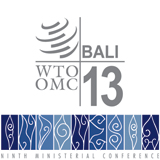














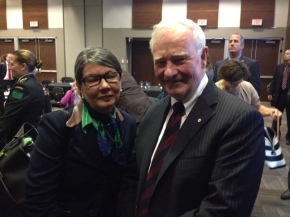




























-original.png)



